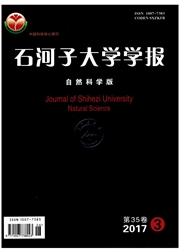

 中文摘要:
中文摘要:
本文针对霜霉菌侵染葡萄叶过程中植保素积累与活性氧调控规律开展研究.选取 7 月龄的红地球葡萄叶片, 鉴定并分离霜霉病菌对离体的葡萄叶片在 20℃黑暗条件下进行侵染处理. HPLC 法分析侵染时间与白藜芦醇的含量的时效关系, 检测侵染后细胞活性氧积累时效关系, 分析茋类物质合成途径限速酶基因的表达时效关系, 最后通过助氧化剂及抗氧化剂的正反验证来确定霜霉菌对葡萄白藜芦醇的诱导规律.结果表明, 霜霉菌侵染离体葡萄叶片活性氧与白藜芦醇积累呈现时效关系的顺序性, 活性氧水平 24h 时达到最高, 白藜芦醇叶鲜重含量 72h 达到最高(59.46 μg/g); 侵染过程中白藜芦醇合成途径下相关酶 STS 基因表达明显上调, 而 PAL、 C4H 和 4CL 的酶基因表达量在 24h 或 48h 最高;助氧化剂 H2O2 和 FeCl3前处理组叶片白藜芦醇含量增加, 抗氧化剂 NAC 和 GSH-EE 前处理组白藜芦醇含量减少, 提示霜霉菌诱导白藜芦醇积累与活性氧调控密切相关.
 英文摘要:
英文摘要:
Downy mildew is the most common grape disease. This study carried out a research on the patterns of phytoalexinaccumulation and reactive oxygen regulation during the infection of downy mildew on grape leaves. 7-month-old grapevine (Redglobe) leaves and fresh downy mildew were selected for innoculation in 20℃ under dark conditions. The time-effect relationshipsbetween infection and resveratrol content were analyzed by HPLC method. Similarly, the accumulation of reactive oxygen species(ROS) after infection was determined by spectrophotometric method. The gene-expression level of key enzymes in stilbene pathwaywas semi-quantified by RT-PCR assay. The relationship between the resveratrol-elicitied potency by downy mildew and ROSaccumulation was identified by positive and negative validation via additional both pro-oxidative or anti-oxidative approaches. Theresults showed that downy mildew induced the accumulation of ROS in grape leaves which reached the highest level at 24 h.Resveratrol accumulated with time and at 72h it reached 59.46 μg/g. The expression of STS gene was significantlyup-regulated, while the expression of PAL, C4H and 4CL reached the highest at 24 h or 48 h in the resveratrol synthesispathway. The content of resveratrol in grape leaves increased inH2O2 and FeCl3 treated groups, while the content of resveratroldecreased in the treatment group treated with antioxidant NAC and GSH-EE. It suggests that the accumulation of resveratrolinduced by downy mildew is related to redox mechanism.
 同期刊论文项目
同期刊论文项目
 同项目期刊论文
同项目期刊论文
 期刊信息
期刊信息
